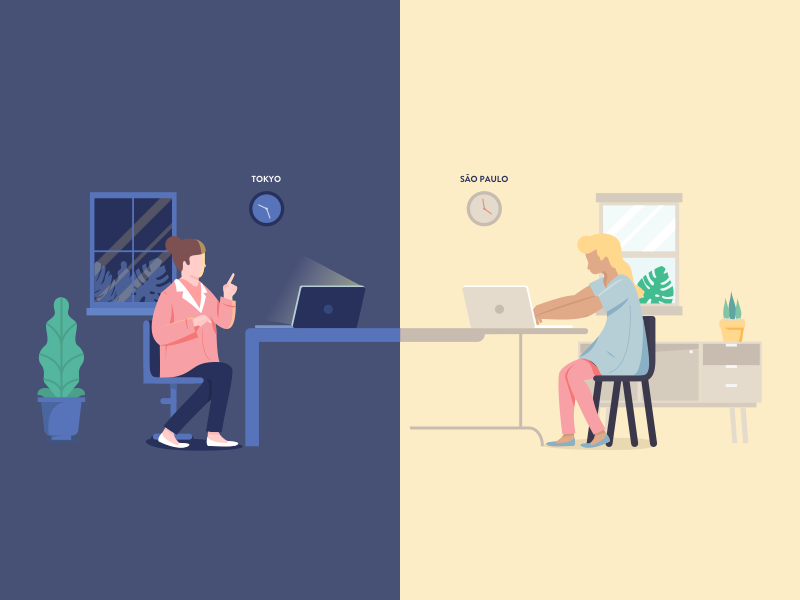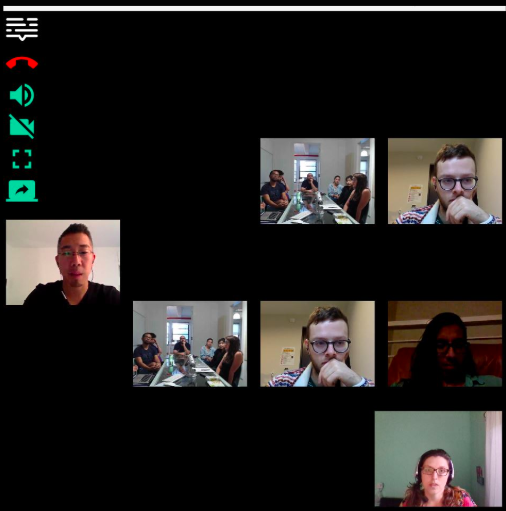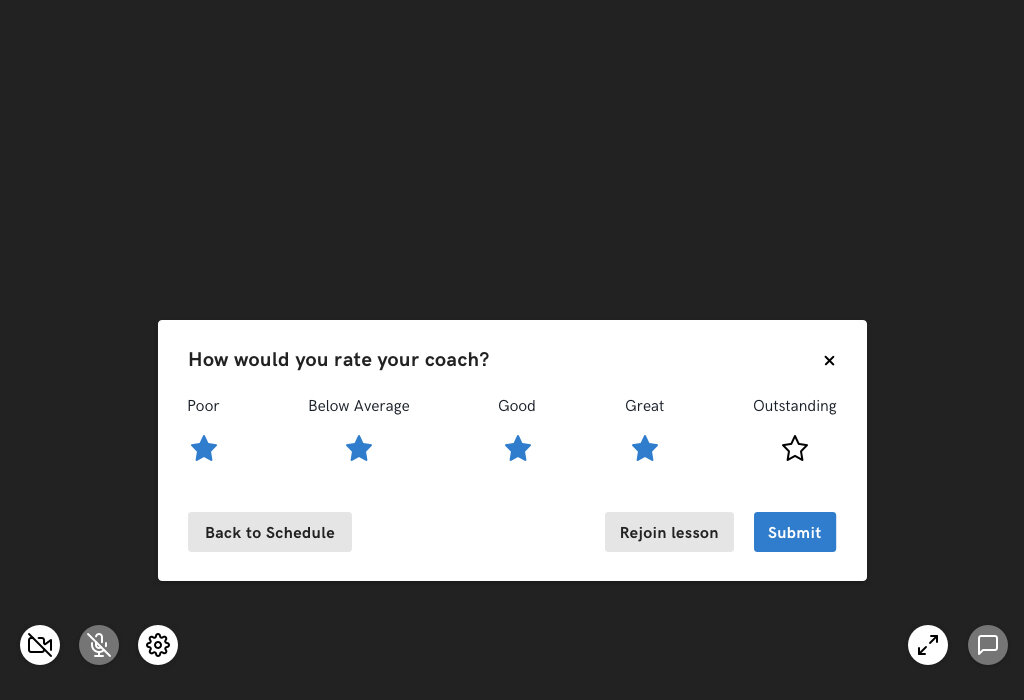Interactive Classroom
The Interactive Classroom is a new educational environment that provides learners and coaches an easier way to virtually connect for lessons. This ongoing project provides a more collaborative approach to share lesson materials.
My Role
I led the design of the Interactive Classroom. Collaborating with engineers, product managers, and language coaches to build the best online learning tool. The app launched globally on April 23, 2017.
The Goal
Capture interactions between the coach and learner to unlock actionable insights and create deeper engagement.
Through post-lesson feedback from learners, we wanted the ability to measure and improve the quality of both the learning experience and platform. This keeps managers and stakeholders “connected to” and aware of both the value and impact that Lingo Live lessons are having on their employee's workplace performance.
Research: Understanding our coach and learner’s needs
The internal round was conducted between the coach management team and learner success team. The Coach management team manages coaches who work with us, and the learner success team ensures the learner’s are having a pleasant experience. They both have valuable insight into the needs of the Interactive Classroom.
When I designed the Interactive Classroom, I didn’t want it to be just a video conference platform. The problem of having a video call and document editing platform open simultaneously creates a chaotic learning environment. A workspace that brought real-time interaction and a parallel creative writing environment was needed.
The Why
To surpass the traditional concept of a video conferencing platform, Lingo Live integrated micro interaction to elevate online learning experiences. Lingo Live created this learning environment to incorporate Google Doc and video conferencing together. Data related to video call quality and lesson quality was unattainable with the use of platforms like Google Hangouts and Skype. By creating our own platform we had access to the necessary data.
By creating our own learning environment we
Obtained reliable metrics on missed lessons, lesson duration, and tardiness.
Avoided exposing ourselves to risks such as depreciation of services and downtime.
Streamlined coach communication, and material sharing.
Created branding opportunity.
The How
1. Product and engineering team knew the baseline to create a video conference platform. The ability to see each participant, to leave, mute audio, stop the video, and enter fullscreen.
2. Once the baseline was set up internal and external research was conducted. The internal round was necessary because our coach management team and learner success team have valuable insight into our process. They work with coaches and learners closely so they know exactly what our users need and want.
Many of the feedback was around the need to streamline audio, call, chat, and some sort of interactive piece to the experience. Users echoed the pain of having too many tabs open when taking a lesson. Which created a chaotic and disruptive learning experience.
“It’s a little stressful to have multiple window and tab open while in a lesson”
“My coach and I use different platform here and there due to poor connectivity in skype or bluejeans. Having a one stop shop for everything can be helpful”
3. To have participants accurately delve into the project sketch session, we used guiding questions like “How might we…….?”. This ensures creativity with parameters.
Reframing your insight statements as “"How Might We” questions can turn challenges into opportunities for design. Allowing participants to sketch/answer in variety of ways.
“How might we experience chat, document editing, and video all at once?”
“How might we gather data out of each session?”
“How might we guide our users into our video classroom platform?”
Good resource for this framework: http://www.designkit.org/methods/3
Decisions; Rational Validation: Optimize your learning experience
Before Interactive classroom, people relied heavily on multiple tabs and open windows to conduct a virtual lesson, Causing the learning experience to be congested and disruptive. In order for our users to experience a seamless virtual lesson, we incorporated the idea of call, chat and, document editing all in one place, Making the Interactive classroom a one-stop-shop learning tool.
Call: Prior to joining the call, participants will be given the option to join only with audio, to join with muted audio, or to join with their camera off.
Chat: Some obvious reasons like faster problem resolution, and user convenience. But one of the biggest reasons why users are using Lingo Live is to improve language and communication skills. To be able to type is very important.
Audio conversations also can’t be relied on 100%. Having chat along with video increases the reliability of the platform, and keeps everyone well-informed.
Easy sharing and editing: I was most excited about this rare functionality in the video conference realm. We made it possible for participants to edit Google documents while conducting a video conference. This feature helps learners and coaches edit a document and brainstorm their learning journey together.
Micro Interaction: Easy sharing and editing?
To elevate our learner’s experience we worked in Google Docs into our Interactive Classroom so they could work together in real time. This means sharing documents with coaches, editing, commenting and adding action items in real time, and never losing changes.
A/B Test Focus group. Main feedback: Lot of stuff happening. But are everything here necessary for now? Users use document editing, video, audio call the most.
A/B Test Focus group. Main feedback: Confusing, and clutter. Not too sure what to focus on first.
A/B Test Focus group. Main feedback: Cleaner compared to the other. Easier to understand what I should focus on. It’s also great that the creative space is taking up so much real estate.
Final Design
In a perfect world we would have wanted to release Interactive Classroom with more features but we eventually just stuck with video, audio call, chat, document sharing/editing, opening up webpage within, and video sharing. These were the constraint and challenges that resulted in our first release:
Big Picture Thinking. Creating a design that can evolve/ iterate with the company. As a designer I wanted to be cautious about introducing too many features at once. Instead I focused on a version that could focus on document interaction and calling, which was where most of the pain points were coming from.
Limited Resources. Lingo Live is running on 5 engineers and with the time constraint, we had to be cautious of the features we wanted to include in the first release.
Time. Lingo Live really needed to release this project to stand out from other educational service out there.
Final refined design
Post lesson feedback
We’ve used to send different post lesson surveys through survey monkeys but this was inefficient and made data collection hard. In fact our response rate was at 7%. Moreover, the cadence for these surveys makes reporting progress early for expansion very hard. The interactive classroom brings opportunity to increase our response rates as open rates via emails have been historically very low. A shift to more constant data collection would give customer support an opportunity to report on information earlier on and more consistently. The decision to implement post lesson feedback has increased the response rate from our learners up to 38%.
This not only allows us to confidently provide reporting for account expansion but also allows us to collect data to improve our coaches and their teaching methodology.
Question 1: Quantitative data
Question 2: Qualitative data
Conclusion
The Interactive classroom is a platform packed with micro-interactions to enhance the learning experience. Having a coordinated working environment is the key to making learning seamless and enjoyable for users. Micro-interaction in the Interactive Classroom can be used to take away the dull, negligible aspect of simply using a video conference tool and making it far more enjoyable and memorable.
Though further investigation is needed for more concrete results, the present study suggests that to enhance employees’ soft skills and improve workplace environment organization might find it more fruitful to provide face-to-face (Interactive Classroom) or blended rather than pure online training (Duolingo, Rosetta Stone).















